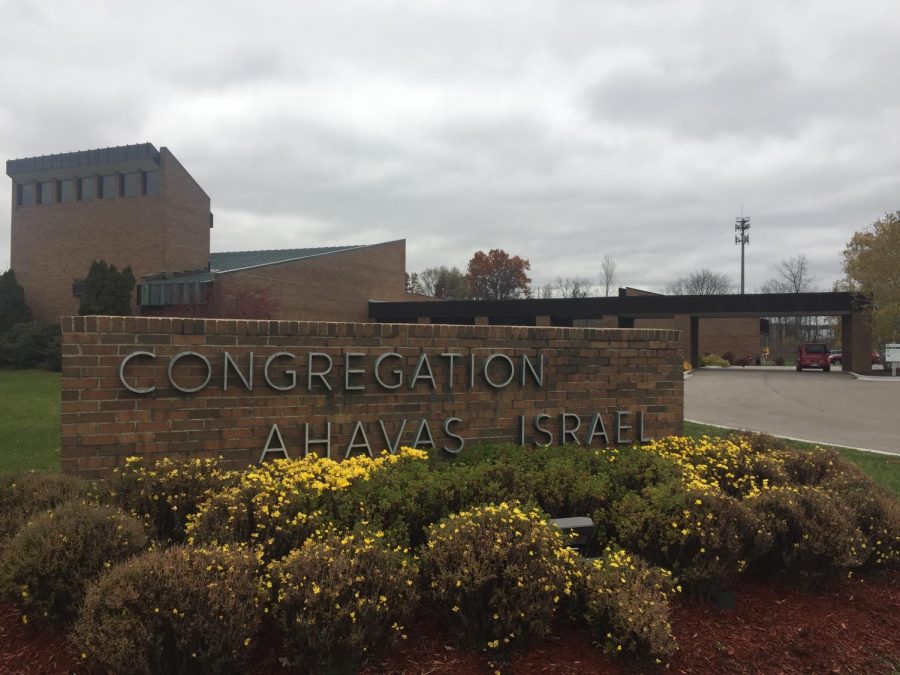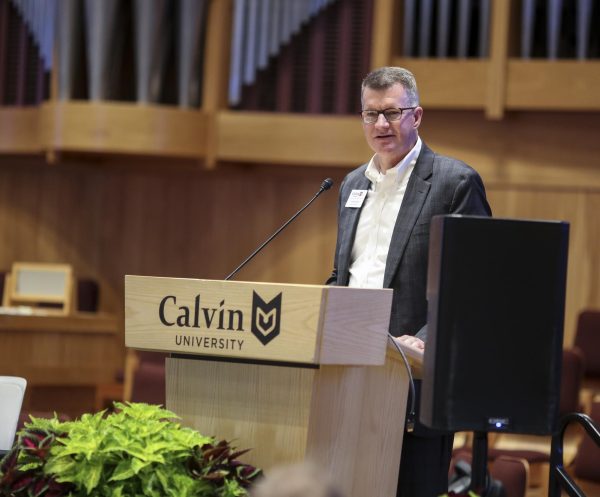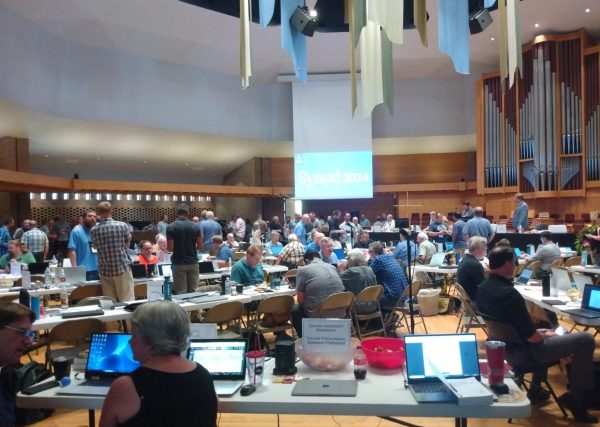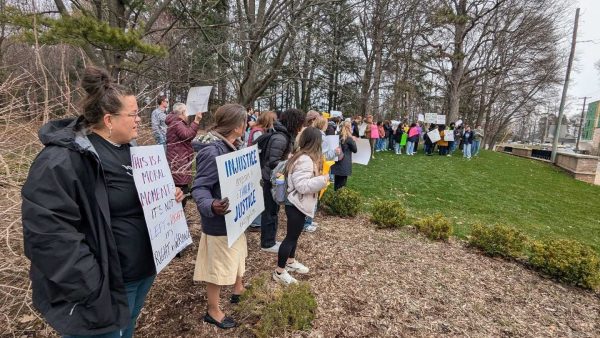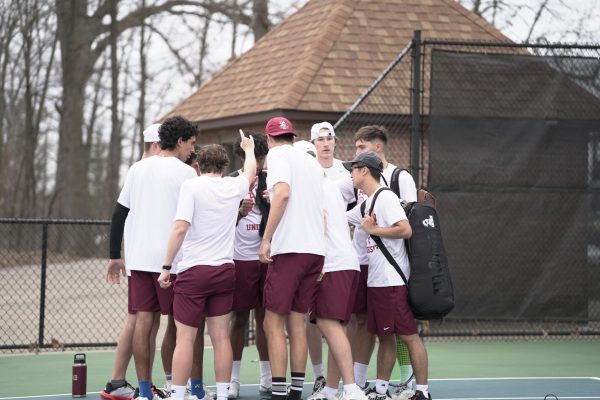A week after Tree of Life shooting, a GR synagogue worships “in memory and in defiance”
While congregants worshipped inside, the doors of Congregation Ahavas Israel were locked on Saturday.
It was only a week ago that eleven Jews were massacred while worshipping at the Tree of Life synagogue in Pittsburgh. The FBI and the Department of Homeland Security, which both partner with Congregation Ahavas, let the Grand Rapids synagogue know that risk was high. They locked the doors and had congregants and visitors enter through a side door. Two members of the security team let people in and silently kept watch over the worshippers throughout the service.
Despite the security measures and fears of rising anti-Semitism, the congregation was undeterred; the synagogue was full. Roughly 40 people normally attend the weekly services. This week, over double that number attended. Before the Torah readings, the rabbi asked the unusually large crowd to move from the smaller side chapel where they typically host worship into the larger sanctuary in order to accommodate the numbers.
Congregation Ahavas was celebrating the same service as the Pittsburgh Jews had a week earlier: Shabbat, the Jewish sabbath. It is a day meant for rest and joy. Conservative Judaism follows this code of rest so seriously that many members of Congregation Ahavas won’t use any electronic devices from Friday evening to Saturday evening. As a result, the news of the massacre from Pittsburgh came in a slow trickle. No one knew about the gunman during the Oct. 27 service.
One member heard about it when he went to another service after his own. A man who was late bringing his elderly mother to the second service told him about it in the back of the sanctuary. Another Congregation Ahavas member noticed a police car in the synagogue parking lot following the service. His family relayed the story to him once he was home. Because of the restrictions on electronic usage, the individual congregants couldn’t tell each other or mourn with one another for hours.
Between then and the Shabbat service, they described an outpouring of love and support from the Grand Rapids community. Their kitchen held multiple flower arrangements. During the Kiddush following the service (when the congregation blesses the Sabbath service with wine or grape juice), numerous cards from concerned outsiders sat between platters of fruit and cookies. The Jewish Federation of Grand Rapids hosted a vigil on Thursday, November 1, where peoples of all faith mourned the lives lost at the Tree of Life.
The cantor, Stuart Rapaport, said, “The outpouring of support has been comforting. It’s been as if those who passed were family — which in Judaism, they kind of are.”
It’s a theme that congregants brought up frequently: the Jewish population in America is small, only about 2 percent of the general population, and incredibly interconnected — an attack on one congregation feels like an attack on all. Rapaport actually had relatives in Pittsburgh, however none who were injured or killed.
As a result, Congregation Ahavas mourned the dead as if they were blood. A middle school-aged boy wore a Pittsburgh Steeler yarmulke in solidarity. The names of the injured, both Tree of Life congregants and police officers, were read aloud and prayed for. The name of each victim was recited, and the refrain “May their memory be for a blessing” recited after.
The entirety of the world’s Jews read the same text, in the same language, with the same wording on every Shabbat. This past Saturday, they read Genesis 23–25 in unison. Drawing from the passage, Rabbi David Krishef stated that Abraham and Sarah had come to the end of their lives in a land that they they lived in but did not belong to. This has been the plight of Jews throughout history, he explained, and events like the Tree of Life massacre seem to imply that it’s the case for Jews in “Christian America” today. However, he dismissed that idea and stated that Jews are just as much a part of the tapestry of America as any other people group, citing the wave of support as proof.
Their act of worshipping together, he said, was “in memory of the victims and in defiance” of the killer who sought to marginalize and make strangers of the Jews who live in America.
Congregant Doug de Lange, who studied Hebrew at Calvin Seminary in the early nineties, saw this event not as the result of recent political rhetoric but as millenia-old anti-Semitism “rearing its ugly head.”
De Lange said, “Everyone likes to call Jews the ‘chosen people,’ but no one says what we’re chosen for … Our mission is to protect the Torah … and all 304,805 letters have stayed the same since they were handed down from Sinai, and people hate us for it.”
De Lange called this hate confusing but also named it as an unchanging part of Jewish life. He was in Israel in the early 2000s, saying daily prayers when news came that a gunman had murdered multiple people in a nearby building.
Despite this shadow of death, Congregation Ahavas continued to toast “L’chaim,” to life. According to Krishef, Shabbat is a day meant to be so filled with so much joy that Jews won’t read Psalm 100, a psalm instructing listeners to worship and serve with gladness, because they don’t need it. The joy is inherent in the day. The murderer in Pittsburgh sought to destroy the joy of the Jewish people, said Krishef. By worshipping to remember the lost and defy the killer, Congregation Ahavas Israel worshipped together mournfully on the Shabbat following Pittsburgh; in the hope that they could soon do so with joy once more.




